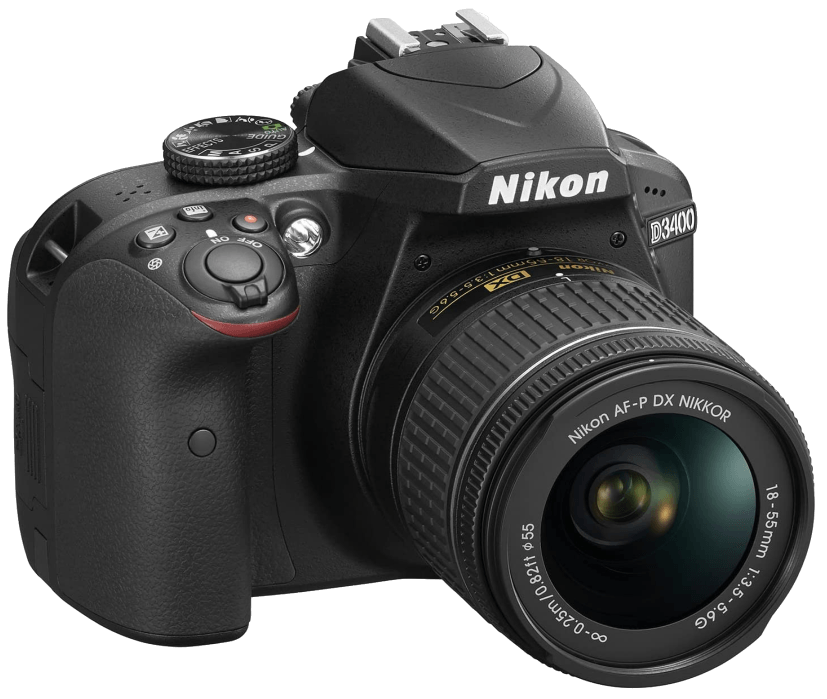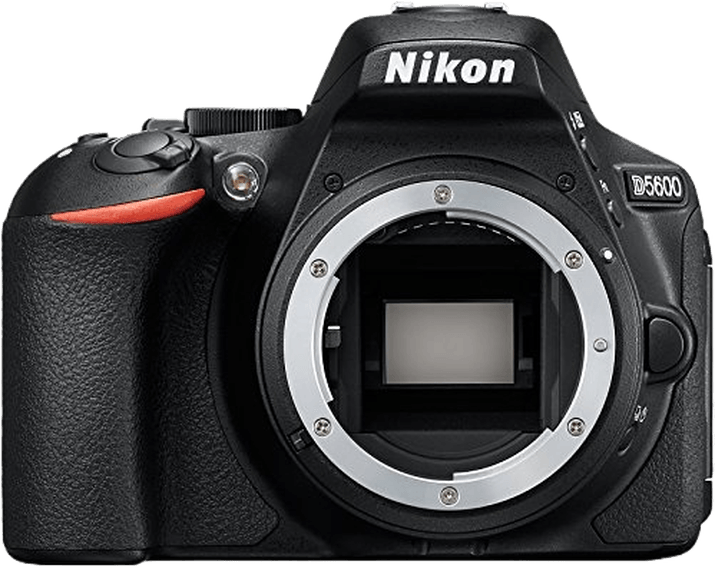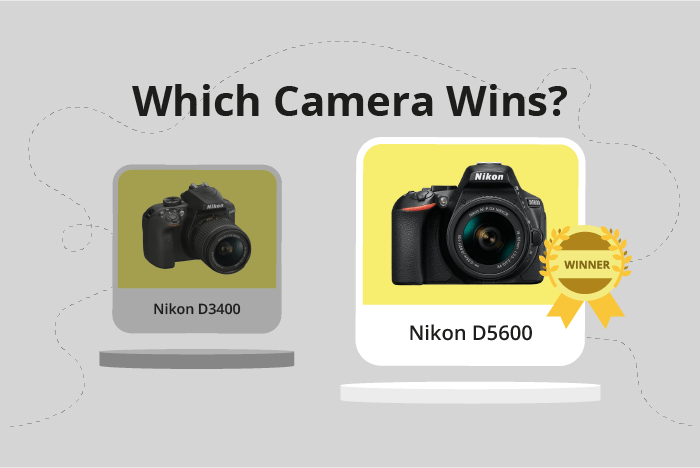Nikon D3400 vs D5600 Comparison
Nikon D3400

Nikon D5600

The Nikon D5600 outperforms the Nikon D3400 with a score of 66/100 compared to 61/100. Both cameras are DSLRs released in 2016, with the D3400 announced in August and the D5600 in November. They share similar dimensions, with the D5600 being slightly slimmer at 124 x 97 x 70mm compared to the D3400’s 124 x 98 x 76mm. However, the D5600 is slightly heavier at 465g, while the D3400 weighs 445g.
The D5600’s higher score indicates it is a better camera, but the D3400 has its advantages, such as a lower launch price of $650 compared to the D5600’s $700. The D3400 is also lighter, making it more convenient for travel and extended use.
Despite these advantages, the D5600’s superior performance and compact design make it the winner in this comparison. Both cameras are suitable for different needs and preferences, with the D3400 being a more budget-friendly and lightweight option, while the D5600 offers better overall quality and features.
Nikon D3400 vs D5600 Overview and Optics
When comparing the optics of the Nikon D3400 and the Nikon D5600, both cameras score 65/100, making it a tie. These two cameras share several specifications, including 24.2 megapixels, a shooting speed of 5 frames per second, CMOS sensor type, Expeed 4 processor, APS-C sensor size, Nikon F DX lens mount, and the absence of image stabilization.
Despite the identical scores, the Nikon D3400 has a slight advantage in terms of its sensor, with a DXOMARK score of 86, compared to the D5600’s DXOMARK score of 84. This means the D3400’s sensor performs marginally better in terms of image quality, dynamic range, and low-light performance. Thus, the D3400 is the better option for those seeking superior image quality in their photographs.
On the other hand, the Nikon D5600 offers no significant advantage over the D3400 in terms of optics, as both cameras share the same specifications. The equal score reflects the similarities in their performance and capabilities. Therefore, the D5600 is not a better option when considering only the optics.
Taking into account the optics comparison, the Nikon D3400 emerges as the slightly better choice due to its marginally higher DXOMARK sensor score. However, it is essential to consider other factors, such as features, ergonomics, and price, when deciding between these two cameras. In the end, both the Nikon D3400 and the D5600 offer similar performance in terms of optics, making either camera a suitable choice for photographers seeking a reliable and high-quality DSLR.
Nikon D3400 vs D5600 Video Performance
The Nikon D5600 outperforms the Nikon D3400 in video capabilities, scoring 70 out of 100, compared to the D3400’s score of 56. Both cameras share some common video specifications, such as Full HD video resolution, maximum video dimensions of 1920 x 1080, and a maximum video frame rate of 60fps. However, the D5600 has additional features that make it a superior choice for video recording.
One of the main advantages of the Nikon D5600 is its built-in time-lapse functionality. This feature allows users to create stunning time-lapse videos without the need for additional software or equipment. The D3400 lacks this feature, which means users must rely on external tools or software to achieve the same effect.
While the D3400 does not surpass the D5600 in video capabilities, it still offers decent performance for its price range. For those who primarily focus on photography and only occasionally record videos, the D3400 may be a satisfactory choice. However, if video recording is a priority, the D5600 is the clear winner.
Considering the video capabilities of both cameras, the Nikon D5600 stands out as the better option due to its higher video score and the inclusion of time-lapse functionality. The D3400 may be suitable for casual video recording, but the D5600 offers more advanced features for those who are serious about capturing high-quality videos.
Nikon D3400 vs D5600 Features and Benefits
The Nikon D5600 wins the features comparison with a score of 72/100, while the Nikon D3400 scores 54/100. Both cameras share some specifications, such as screen size, with the D3400 featuring a 3-inch screen and the D5600 having a slightly larger 3.2-inch screen. Neither camera has GPS, but both have Bluetooth connectivity.
The D5600 excels in several aspects compared to the D3400. It has a higher screen resolution of 1,037,000 dots, compared to the D3400’s 921,000 dots, providing a clearer and sharper display. The D5600 also features a touchscreen, making navigation and control more intuitive. Additionally, the D5600 has a flip screen, allowing for greater flexibility when shooting from different angles. The D5600 also includes Wi-Fi connectivity, enabling easy sharing and remote control of the camera.
The D3400, despite scoring lower in features, still has some advantages. Its smaller screen size results in a more compact and lightweight design, which may be preferable for those who prioritize portability. However, the lack of a touchscreen, flip screen, and Wi-Fi may limit its appeal for some users.
Considering these points, the Nikon D5600 is the clear winner in terms of features, offering a better overall user experience with its touchscreen, flip screen, and Wi-Fi connectivity. The Nikon D3400, while more compact, falls short in providing the same level of convenience and versatility.
Nikon D3400 vs D5600 Storage and Battery
The Nikon D3400 wins in the storage and battery category with a score of 45/100, while the Nikon D5600 trails closely with a score of 43/100. Both cameras have one memory card slot and accept SD, SDHC, and SDXC memory cards. However, the D5600 is compatible with UHS-I cards, offering faster transfer speeds.
The D3400 outperforms the D5600 in battery life, providing 1200 shots per charge compared to the D5600’s 970 shots. Both cameras use the same battery type, the EN-EL14a, and neither has USB charging capabilities.
Although the D5600 falls short in battery life, it compensates with its UHS-I compatibility for quicker data transfers. The D3400’s longer battery life makes it a more suitable option for extended shooting sessions.
Considering the storage and battery aspects, the Nikon D3400 proves to be a slightly better choice due to its longer battery life. However, the Nikon D5600’s faster memory card compatibility may appeal to users who prioritize quicker data transfers.
Alternatives to the Nikon D3400 and D5600
Are you still undecided about which camera is right for you? Have a look at these popular comparisons that feature the Nikon D3400 or the Nikon D5600:

